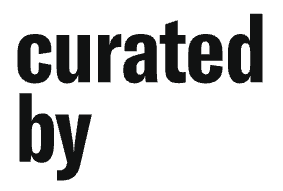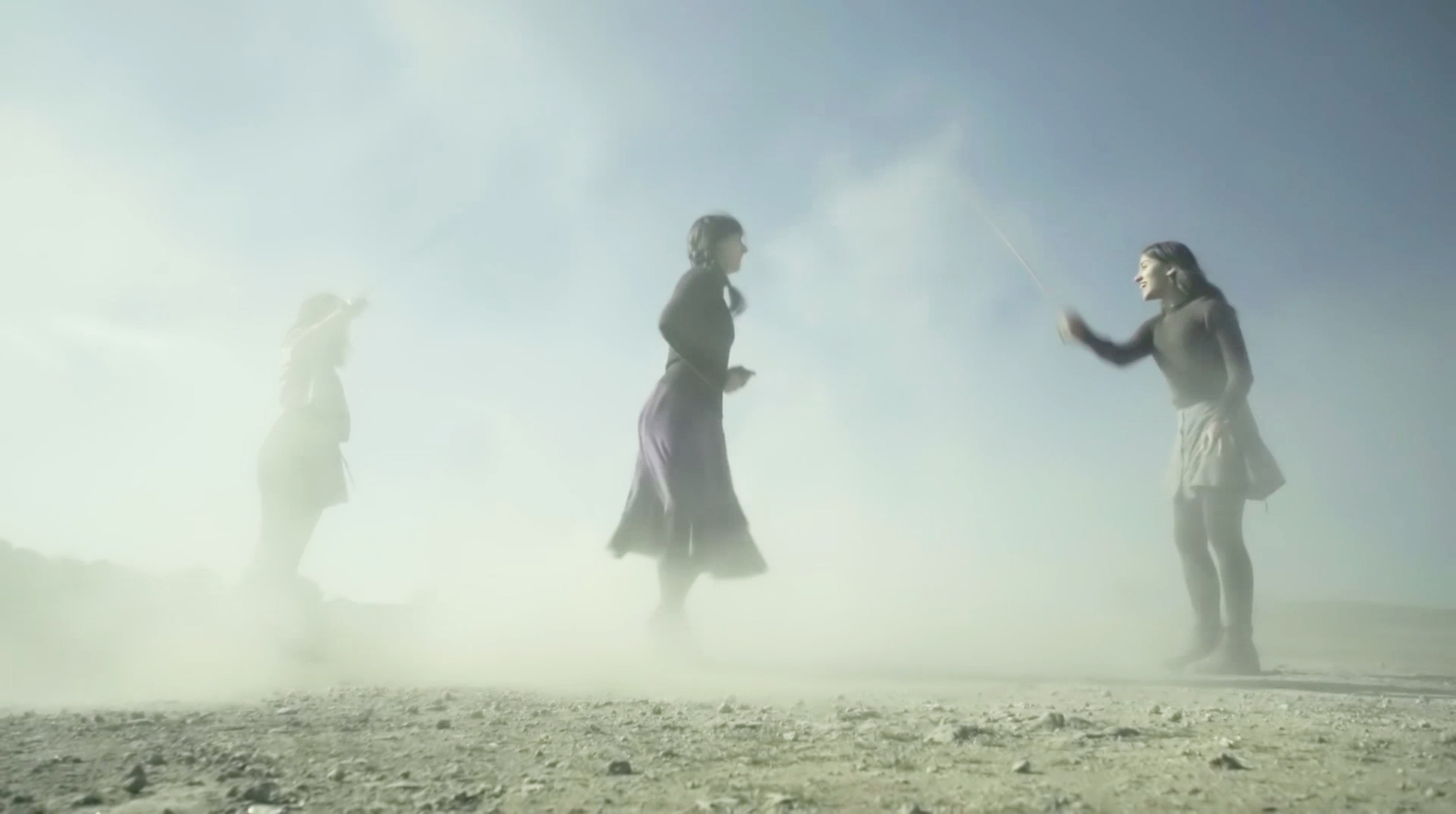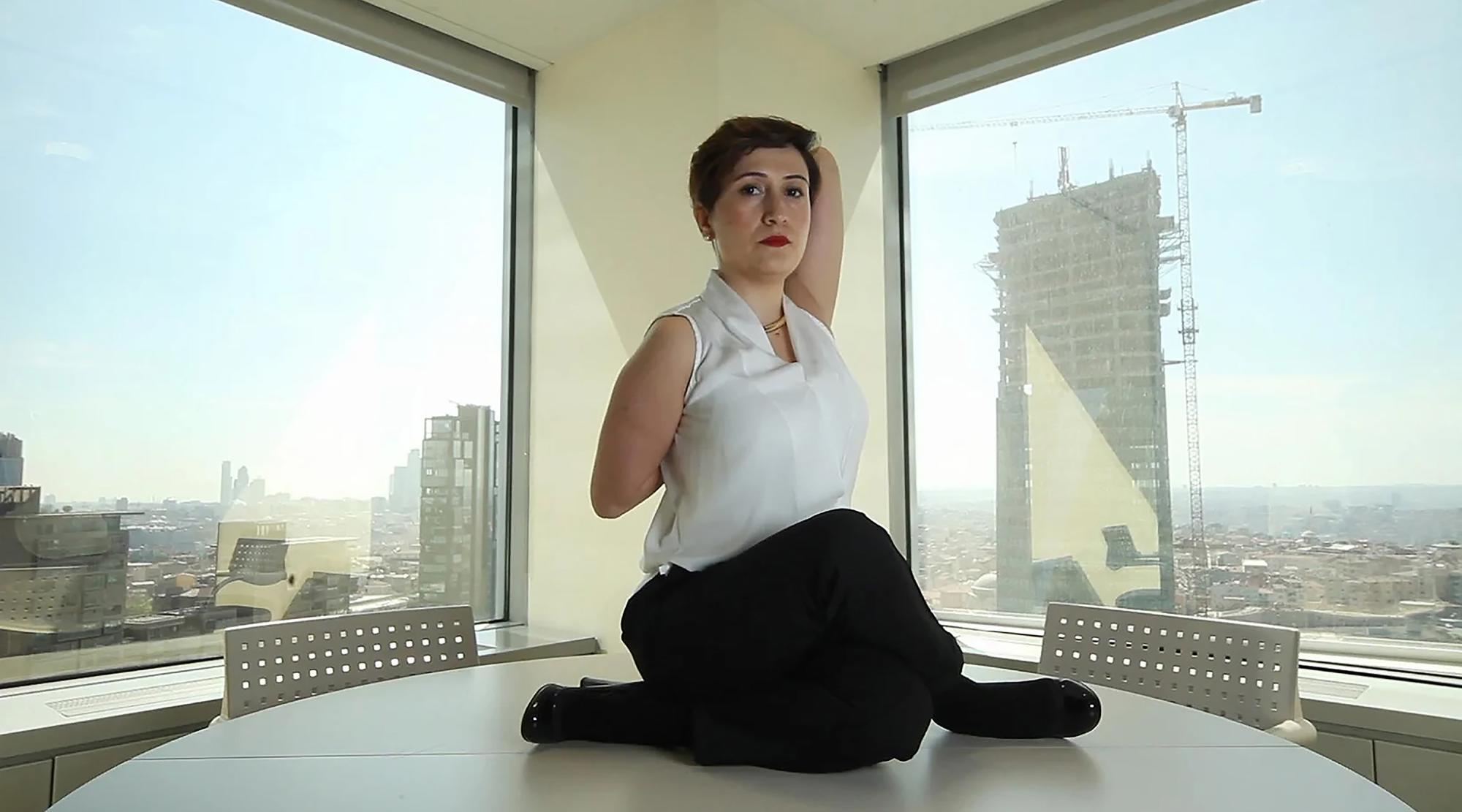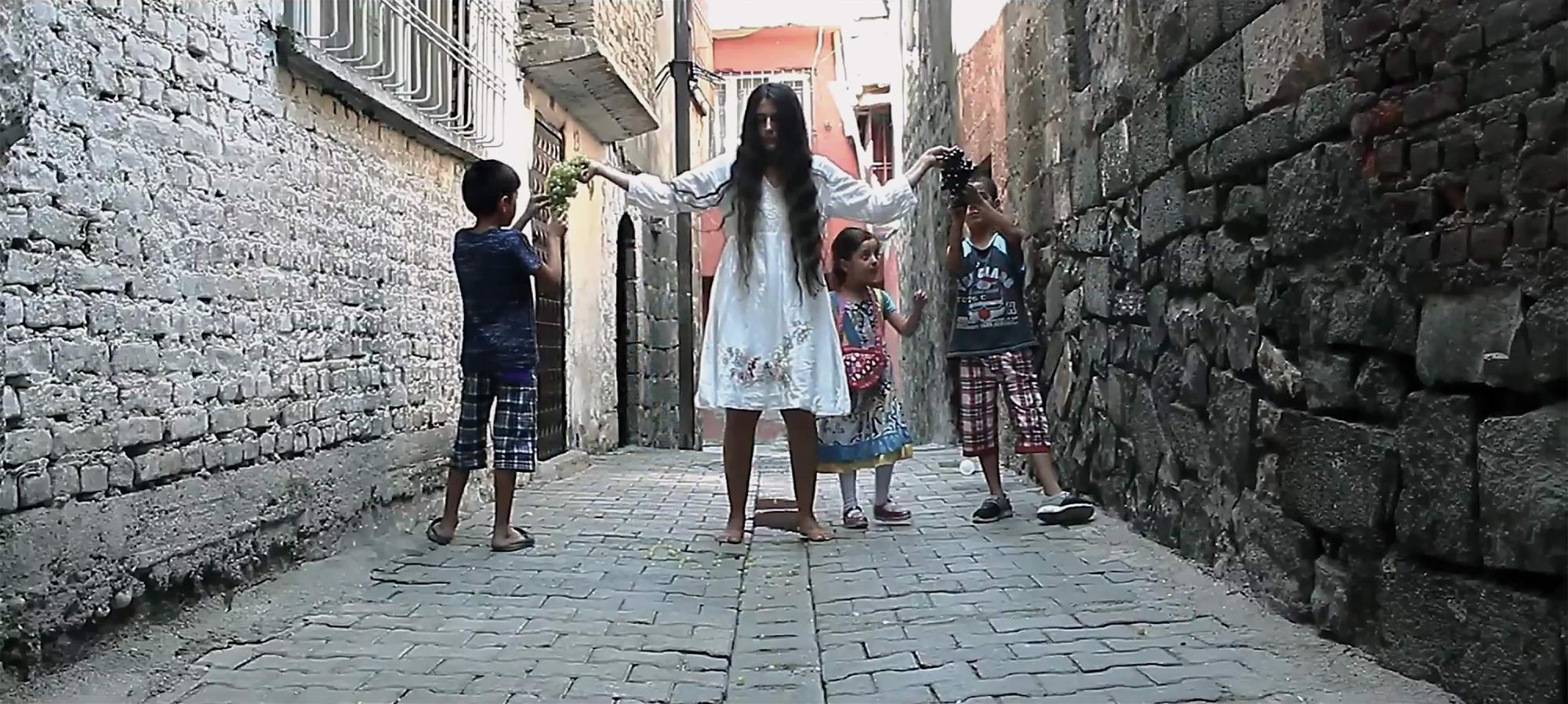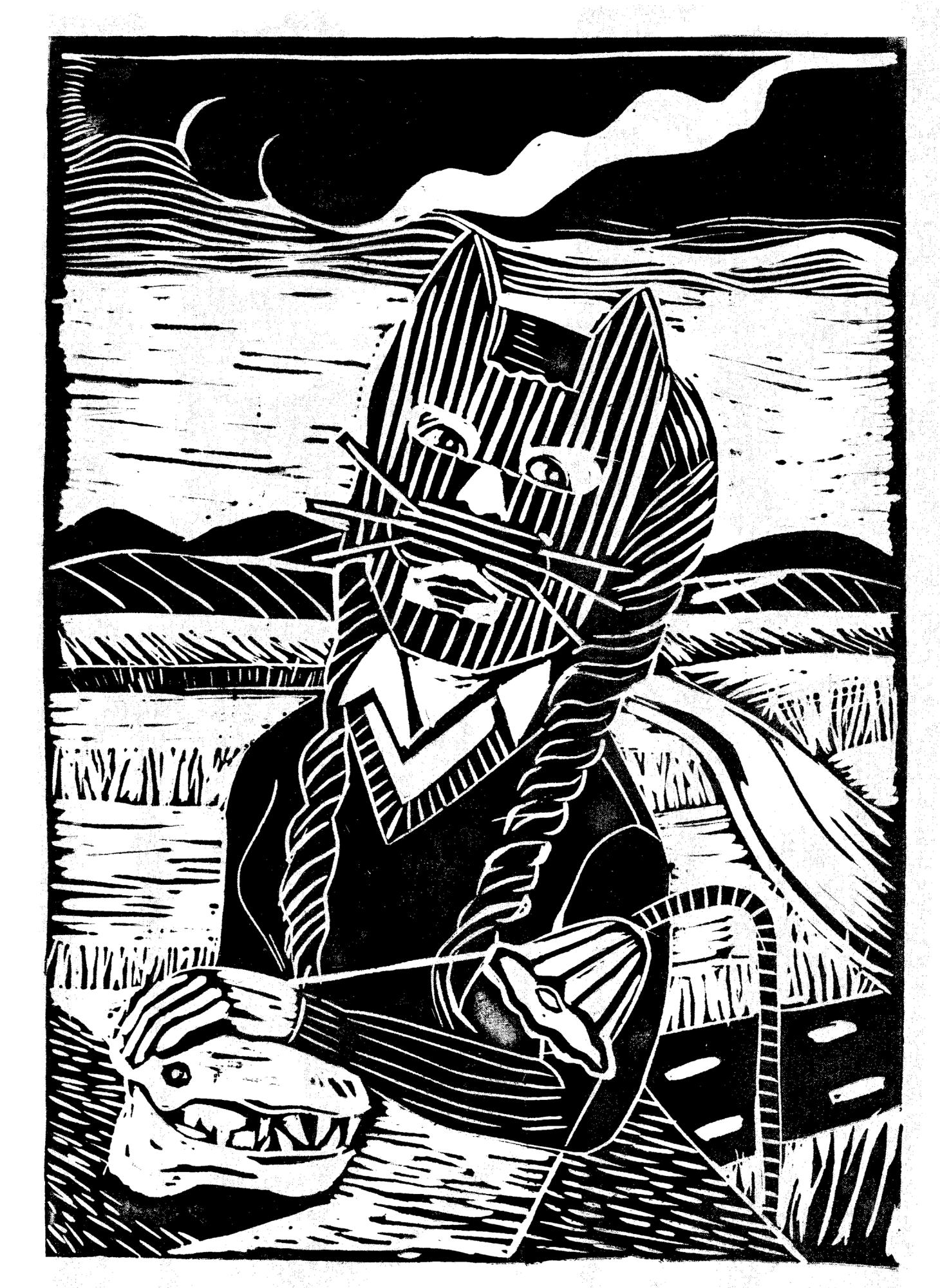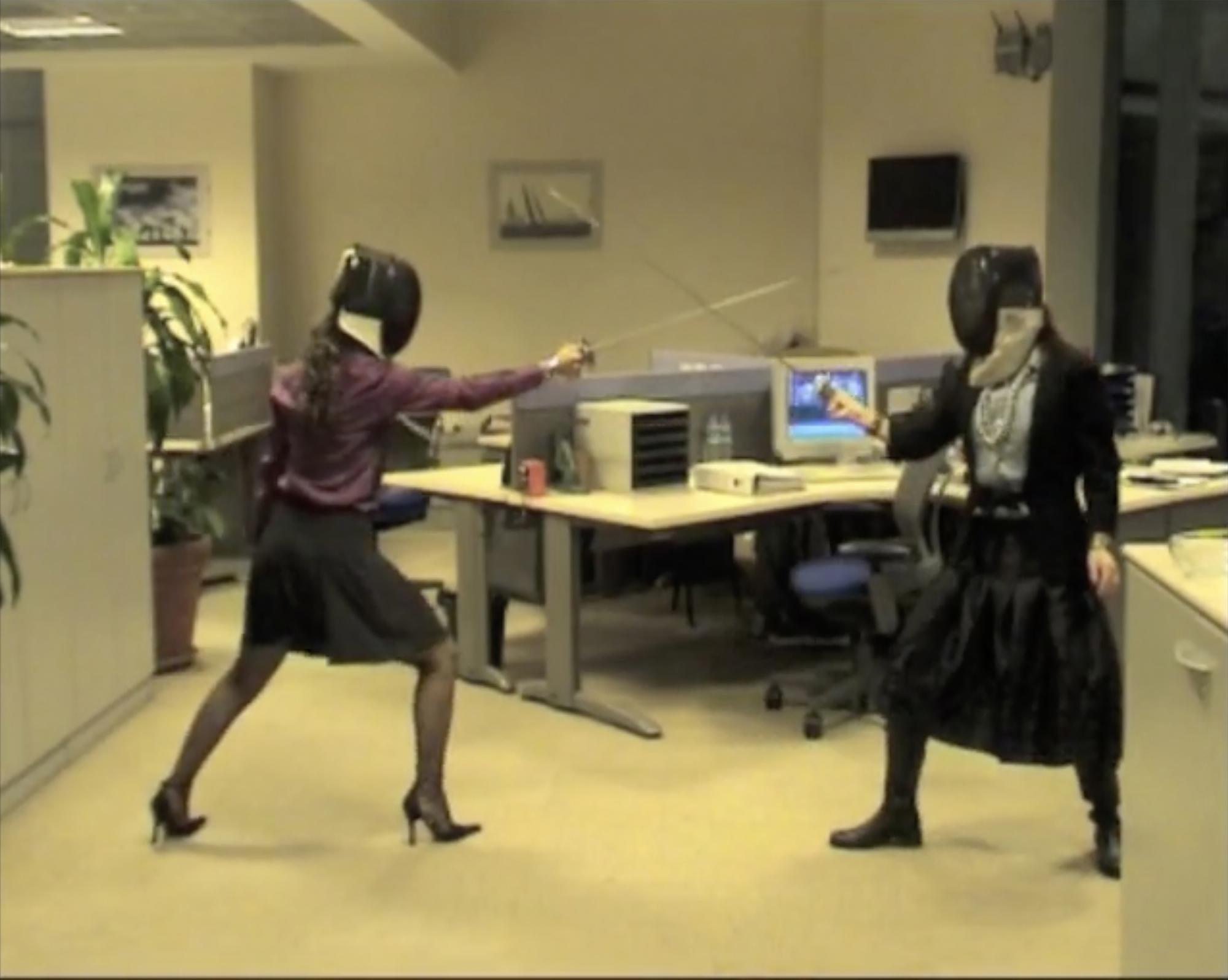E X I L E curated by Pınar Öğrenci
„Unfair Game“

www.exilegallery.org
Curator(s):

Artist and filmmaker Pınar Öğrenci lives in Berlin since 2018. Öğrenci used to work as guest lecturer at Master Studies of Kunsthochschule Berlin Weißensee Raum Strategies. Her works have been exhibited widely at museums and art institutions including documenta fifteen, Berlinische Galerie, Gwangju Biennial, Athens Biennial, Sharjah Biennial, MAXXI Museum and many others. Her first solo exhibition in Europe was realized at Kunst Haus-Hundertwasser Museum in Vienna in 2017. Öğrenci has a background in architecture, which informs her poetic and experiential video-based work and installations that accumulate traces of ‘material culture’ related to forced displacement across geographies. Her works are decolonial and feminist readings from the intersections of social, political and anthropological research, everyday practices, and human stories that follow agents of migration. The works of the artist, who makes site-specific installations influenced by her architectural practice, have atmospheric and poetic qualities.
She is nominated to Böttcher Strasse Kunst Prize 2022 in Germany and won Villa Romana Prize (2023). Her films shown by many film festivals including Visions du Reel in Nyon. Since the late 1990s, Öğrenci has extensively written on contemporary art and architecture for different platforms. She is the founder and director of MARSistanbul, an art initiative launched in 2010 which was active till 2018.
Read a short interview with Pınar Öğrenci (pdf)
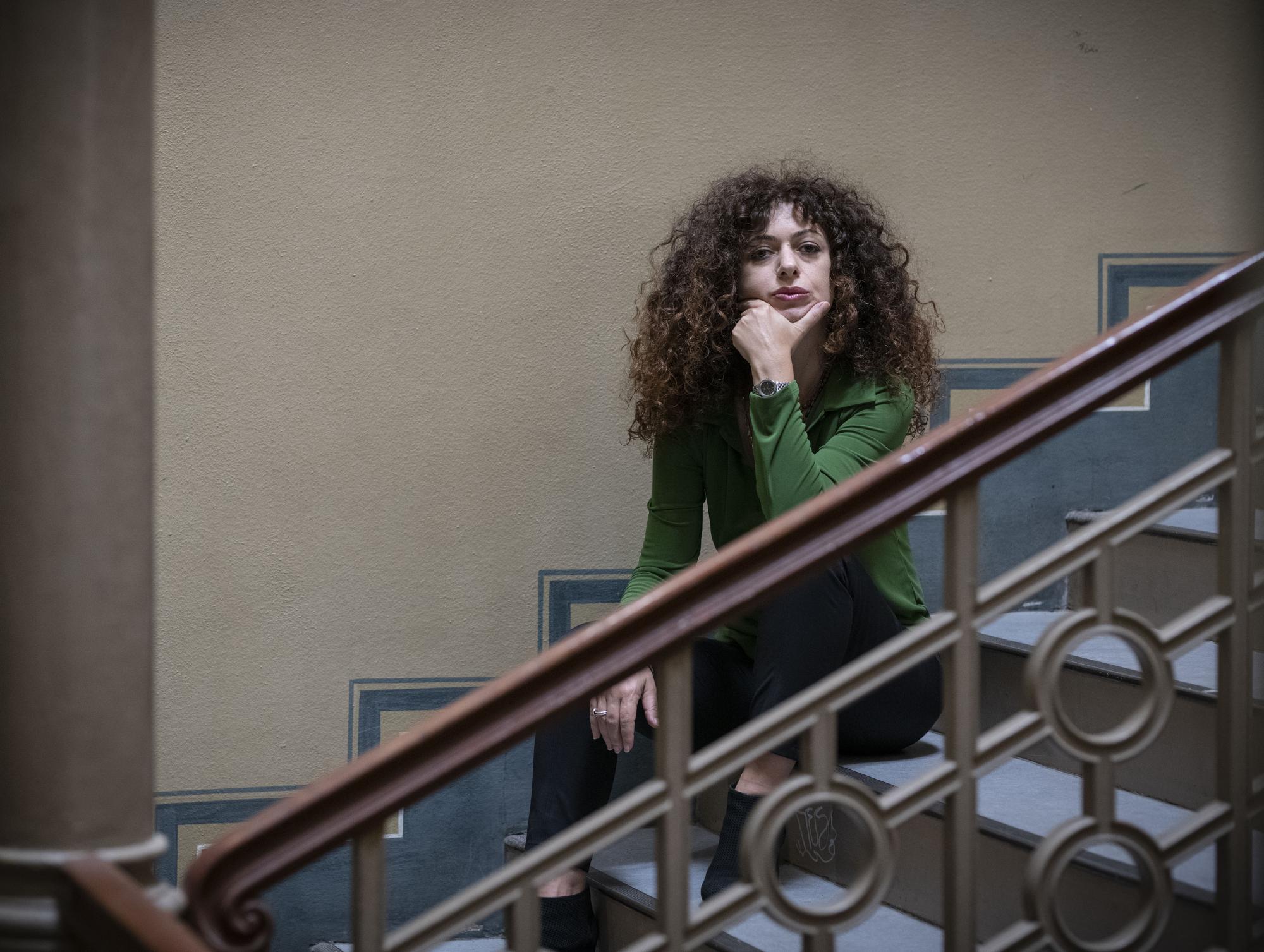
Artist(s):
-
Sena Başöz MoreSena Başöz lives in İstanbul and works across many different media. Her works investigate healing, seeking ways of interacting with what is considered out of reach and experimentally regenerating what is considered frozen-dead-stale-lost. She focuses on broader definitions of "care" and the practices it entails. Her recent solo exhibitions and performances include "Possibilities of Healing", Yapı Kredi Culture Arts and Publishing, Istanbul; “Slalom”, Wellcome Collection, London; “Clam”, Matsutake at Librairie Yvon Lambert, Paris; “Astronomical Movements”, Bilsart, Istanbul; “Ars Oblivionis”, Lotsremark Projekte, Basel; A Consolation, Krank Art Gallery, Istanbul; “Hold on Let go”, MO-NO-HA Seongsu, Seoul and “On Lightness”, DEPO Istanbul. She has participated in group exhibitions such as “There is Nothing Inevitable About Time”, TAVROS, Athens; “This Place”, Yapı Kredi Kültür Sanat, Istanbul; “Transitorische Turbulenzen”, Kunstraum Dreiviertel, Bern; “Studio Bosporus”, Hamburger Bahnhof, Berlin; “Quiet Dialogue”, Tokyo Metropolitan Museum and “Sharjah Biennial Offsite Exhibition: BAHAR”, Istanbul. She received her BA in Economics from Boğaziçi University in 2002 and MFA from Bard College Milton Avery Graduate School of the Arts in Film and Video in 2010. She participated in artist residencies at Cité Internationale des Arts, Paris (2017), Atelierhaus Salzamt, Linz (2010) and Delfina Foundation, London (2020-2022).
-
Burak Delier More1977 born in Adapazarı living and working in İstanbul. Producing in multiple formats, the artist carries out collective projects such as Barmagazine: The Magazine That Thinks It’s a Bar (in collaboration with Eylem Akçay, Emre Tansu Keten and Taylan Kesanbilici, 2018) along with his solo exhibitions where he questions the notion of “freedom”, such as Freedom Has No Script (Iniva, London, 2014), Play Your Part and The Script Will Follow (Pilot Gallery, Istanbul, 2013). Interested in rendering visible the relationships between capitalism and contemporary art practices in his collective and individual work, Delier turns life itself into an object of study by creating absurd intersections using guerrilla tactics and strategies borrowed from everyday life. Furthering his studies with an approach that problematizes both himself and art, the artist seeks to create breathing spaces beyond existing relations of production and power, as alternatives to the dominant living culture, which is one that narrows life to the point of suffocation. Delier had Art Proficiency degree in the Art and Design Department at Yıldız Teknik University. His writings on art and politics have been published by Koç University Press, under the title Scenarios of the Art World. Currently he is working as assistant professor in Fine Arts Faculty, Sakarya University.
-
Fatoş İrwen MoreFatoş İrwen is a a feminist Kurdish contemporary artist who was born in Suriçi Diyarbakır, working in İstanbul and Diyarbakır. İrwen worked as an art trainer for many years, but she can no longer continue due to the policies implemented by the state. From 2017 to March 2020, she was held in prison as a political prisoner. She studied Fine Arts at Dicle University. Gender, body politics, justice, ecology, religion, power and domination are the issues that she is dealing with artistically in the context of their psychological effects. Her works are performative in general, including painting, video, photography and installation that are related with memory, unconscious, dreams, situations as a result of events, psychological tensions by reinterpreting the relationship between body and space. İrwen has been participating many international group exhibitions in Iran, Germany, Austria, Hong Kong, Iceland, France, Mexico, Morocco, Sweden, and Turkey.
-
Pınar Öğrenci MoreArtist and filmmaker Pınar Öğrenci lives in Berlin since 2018. Öğrenci used to work as guest lecturer at Master Studies of Kunsthochschule Berlin Weißensee Raum Strategies. Her works have been exhibited widely at museums and art institutions including documenta fifteen, Berlinische Galerie, Gwangju Biennial, Athens Biennial, Sharjah Biennial, MAXXI Museum and many others. Her first solo exhibition in Europe was realized at Kunst Haus-Hundertwasser Museum in Vienna in 2017. Öğrenci has a background in architecture, which informs her poetic and experiential video-based work and installations that accumulate traces of ‘material culture’ related to forced displacement across geographies. Her works are decolonial and feminist readings from the intersections of social, political and anthropological research, everyday practices, and human stories that follow agents of migration. The works of the artist, who makes site-specific installations influenced by her architectural practice, have atmospheric and poetic qualities. She is nominated to Böttcher Strasse Kunst Prize 2022 in Germany and won Villa Romana Prize (2023). Her films shown by many film festivals including Visions du Reel in Nyon. Since the late 1990s, Öğrenci has extensively written on contemporary art and architecture for different platforms. She is the founder and director of MARSistanbul, an art initiative launched in 2010 which was active until 2018.
-
Şener Özmen MoreSener Ozmen (1971) is a new media artist, writer, editor and translator living in Wilmette, Illinois, US. He was an both actor of dissident contemporary art practices that developed in Istanbul after the 1990s, and in Diyarbakir in 2000s, the city where he lived and produced, and he was one of the art writers who wrote this development through period exhibitions and artists (especially Kurdish). His articles on Kurdish identity, nationalism, militarism, sexism, production of art and literature in war and conflict zones, migration and post-migration trauma problems in his unique language have been published in art magazines and newspapers. He also published two books and many catalog texts on the same subjects. Ozmen's short films and video works have been shown in the world's most respected contemporary art museums and group exhibitions. In 2016, he was a judge at the Love & Change Film Competition at if Istanbul (Istanbul International Independent Film Festival) together with documentary director and screenwriter Adam Curtis (UK) and documentary producer Philippa Kowarsky (Israel). Ozmen curated many exhibitions and presented solo exhibitions and won the Prix Meuly (Hoch Hinaus, Kunstmuseum Thun, Switzerland) in 2005.
-
Nazım Ünal Yılmaz MoreNazım Ünal Yılmaz received an M.A. in 2010 from the Academy of Fine Arts, Vienna. Yilmaz´work is a sensible balance between dealing with matters of the private and the public by merging personal story with social history. Although dealing with issues like identity and nationality as well as capitalist freedom, due to his formal choices, his paintings are not didactic, polemic or pedagogic, but on the contrary they invite the spectator to actively participate in the decoding of the painting. Instead of coherent images, the spectator of his work is presented with a pluralistic and heterogeneous universe, in which they may draw relations between its various formal and conceptual elements. His work has been exhibited at Harkawik, New York, 2023; PSM Galerie, Berlin, 2023; Galerist, Istanbul, 2022; EXILE, Vienna, 2020; Gallery Sanatorium, Istanbul, 2017; Pilevneli Project, Istanbul 2012; as well as participated in group exhibitions in Belvedere 21 Haus, Vienna 2023; Magenta Plain, New York, 2021; Tallinn Art Hall, 2020; Arp Museum, Remagen, 2015; Frankfurter Kunstverein, 2012; Ernst Barlach Museum, Hamburg, 2009 among others.
-
Nalan Yırtmaç MoreNalan Yırtmaç (b.1969, Istanbul) graduated from Mimar Sinan Fine Arts University, Department of Painting, Özer Kabaş Studio. She has worked with the Hafriyat art collective between the years 2000 and 2009. Since 2009, she has been working on urban transformation, city rights, immigration, unsolved crimes, and eco-destruction. Yırtmaç has also been teaching for the past 20 years.
Exhibition text
More
When I was invited to curate an exhibition on the theme of neutrality, I was besieged by the impossibility of the theme. We were being asked to make an exhibition on neutrality, as if there was no war going on around us, as if social injustice and inequality, xenophobia had been left behind, or as if we had achieved an absolute peace and consensus. On the same days, while the lives destroyed by the earthquake in Turkey were still under the rubble, there were two soccer matches that attracted attention in the news. In one of the matches, nationalist fans were throwing explosives on the pitch, and in an attempt to psychologically break down their Kurdish rivals from Amed (Diyarbakir) they unfurled posters of counter-guerrilla leaders of the 90's and a white Renault poster which was a symbol of the secret service of the same violent period in Turkey. At another match, this time in Istanbul, the crowd showed solidarity with the earthquake victims by broadcasting the traffic license plate codes of the affected cities on the scoreboard and throwing dolls for earthquake-affected children onto the pitch. It was as if the soccer field was a performance space that turned into a place of both violence and solidarity and compassion. These two football matches, which haunted me while I was thinking about the themes of neutral, sides, opposites, play, action, inaction, noise and silence, compassion and conscience and so on, became the inspiration for the exhibition. Can the game, which both connects and confronts communities, creates oppositions and dualities, and has the capacity to create an emancipatory space open to action, be a metaphor for political dissent, a method for an agonistic confrontation with the dominant power structures in the world? When players perform within the safe and pre-negotiated rules of the game, can they dislodge power structures, even for a time, by taking over the world in order to transform it, without losing touch with the real world?
The use of play as an artistic expression with a critical mind forms attitudes and ways of thinking which create contrasts between people, places, situations, in temporary, playful ways that allow to break the existing structures in the world and remake them like a jigsaw puzzle. The Unfair Game exhibition explores the potential of 'play' to elicit experiences that expand our capacity to reimagine the contradictions suppressed in everyday discourse, the paradoxes of the world around us, and our relationship to the universe. By carefully negotiating the purpose of the game between pleasure, leisure and the political, the artists in the exhibition engage in a transformative act, at times changing the roles of the players and creating new identities, or subverting the conventional space of the game and proposing new spaces and positions. Instead of winning and competition, the exhibition sees the game as a symbolic experiment in coexistence and survival. For populations such as Kurdish ones and many others, who are constantly forced to defend their existence and for individuals looking for a way out of the cramped metropolitan city life, could 'play', as a repeated practice of daily life and a means of communication, be a way to combat violence, corporate capitalism and other power structures that surround us? Does 'play' can create a free space of movement, even though its framework and rules are usually clear? The Unfair Game exhibition invites to reflect on the conditions of taking sides, equality, balance, non-violence, struggle and the political implications of the theme of play in general through the works of artists from Turkey; Sena Başöz, Burak Delier, Pınar Öğrenci, Şener Özmen, Fatoş İrwen, and Nazım Ünal Yılmaz.
The playful content of the game, both inside and outside the real world, associated with leisure time, opens up a space of free expression for artists, especially in countries like Turkey where censorship and supression are heavily practiced. Unfair Game welcomes its audience with Fatoş İrwen's video Sur Fragments (2016), which is on display in Exile's show window. In her performance video, İrwen emphasizes the ongoing violence in her hometown Diyarbakır, in which she paces back and forth on a street in Sur neighborhood, as if walking in a prison courtyard, unaware that one day later she will be thrown into jail and imprisoned for three years.
When we enter from the door of Exile, we encounter Nalan Yırtmaç's print work Darkness, produced during the Gezi Park protests in Istanbul (2013). Yırtmaç depicts a girl who has to wear a mask to protect herself from the uncontrolled use of pepper gas and carries a skull instead of a toy. The park, which used to be a place of leisure time and playground, has turned into a space of resistance and solidarity, and the demonstrators have transformed aesthetics of resistance by developing tactics and strategies and by turning resistance into a kind of game. By setting up a library in the park, practicing yoga, handing out roses to the police, or setting up barricades with urban furniture and buses, the protesters revealed the playfulness of the protest and responded to the police's acts of violence by playing games.
Moving from Istanbul to Diyarbakır again, we continue to the exhibition with Şener Özmen's video Women Jumping Rope (2017). While three young girls in the video are jumping rope as usual, gradually an increasing amount of dust comes out from under their feet. Towards the end of the video, the dust increases so much that girls becomes invisible. When the artist shoots the video in Diyarbakir, the city where he was born and lives that time, was still reeling from the recent military attacks. The dust in Özmen's work is a symbol of the political uncertainty in the Kurdish geography, the murders that are constantly covered up, the injustice that makes it impossible to see the future, and the rant system that sees the Kurdish geography as a development site instead of the land of a culture rooted in the area since centuries. Özmen decides to leave the country in same days and lives in Chicago now.
The characters in Burak Delier's video Crisis and Control (2013), exhibited in Exile's office space, bring yoga into the office environment, eliminating the categorization between work, private life and leisure. Delier turns the long poses of yoga into a kind of sighing session to talk about the injustices of working life. Delier redefines yoga as an aesthetic and critically reflective way of experiencing the political. With office workers in ironed white shirts and high-heeled shoes, the aesthetics of yoga are turned upside down, using the game as a means of grounding a political stance in an aesthetic way of being in the world.
When we go upstairs at Exile, we encounter two video works by Sena Başöz. While criticizing the unfair and competitive working conditions of business life in the performative videos she shot when she was working in another sector in the early years of her art life, Başöz actually seeks a new way out for her own body by revealing the performative characters of these spaces. In one of the videos, she tries to swim on the floor, and in another she fences with a coworker. Başöz's body, alienated from its environment by crawling on the office floor, wanders among the furnitures like salesman Gregor Samsa who transformed to insect in Kafka's novel The Metamorphosis. Başöz's bodily searches will eventually cause her to quit the job and become an artist.
Sena Başöz's struggle in the office now turnes into struggling with the dilemmas of daily life in two paintings called Liars and Complicated Offer by Nazım Ünal Yılmaz: Cunning, calculations, plans, little lies, tactics, problems and solutions... The lies of children or adults in his Liars painting cause their noses to grow longer like the character Pinocchio. Unal's works treat play as a tactic of everyday life for both children and adults, connecting the child and adult games in the exhibition.
With my new video work Hotel Miks, I wanted to take the audience back to the rural at the end of the exhibition, to Miks (Bahçesaray in Turkish) where my father was born. Avalanches are a regular and deadly occurrence in this small Kurdish town, which roads are blocked by snow for 9 months of the year. Cut off from the rest of the world during these months, playing chess in the coffees is a daily ritual for people to survive. Slightly inspired by Stefan Zweig's last novel, The Royal Game (Schachnovelle, 1941) - in which the main character is imprisoned by the Nazis in a hotel room and chess becomes a survival mechanism in the face of fascism, the hotel is also a compelling metaphor for authoritarian states like Turkey; although having some alluring amenities, it is never intended to become a home for opponents, non Muslim and non Turkish communities.
*Text by Pınar Öğrenci

